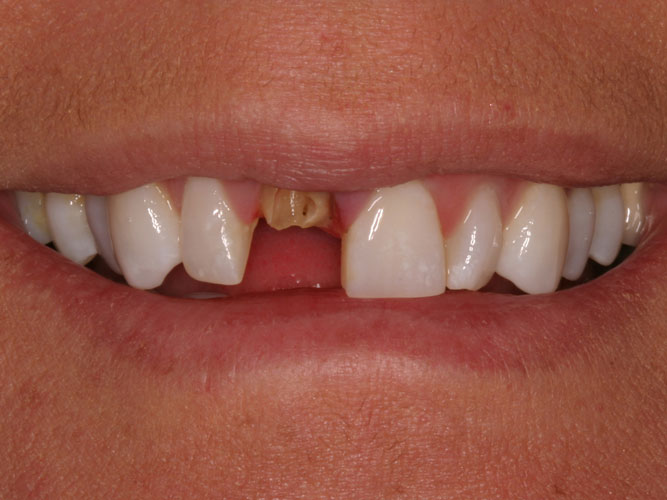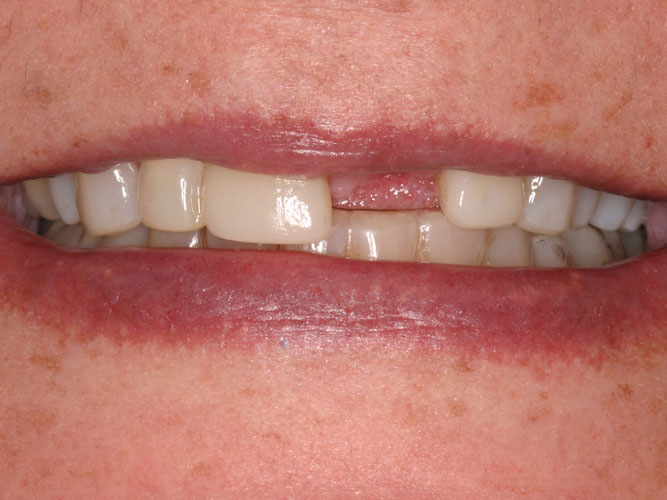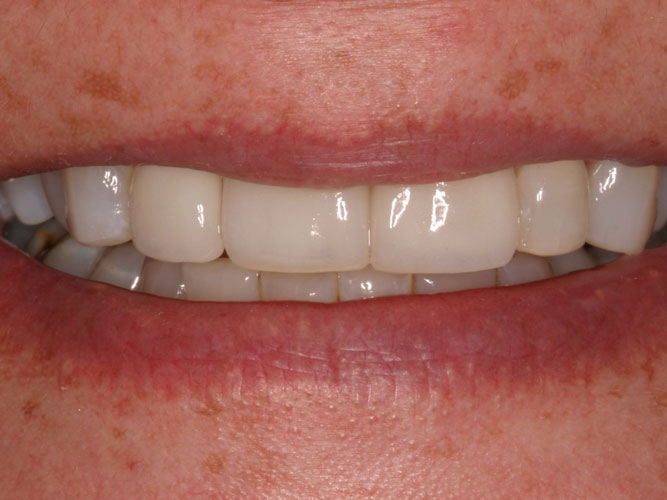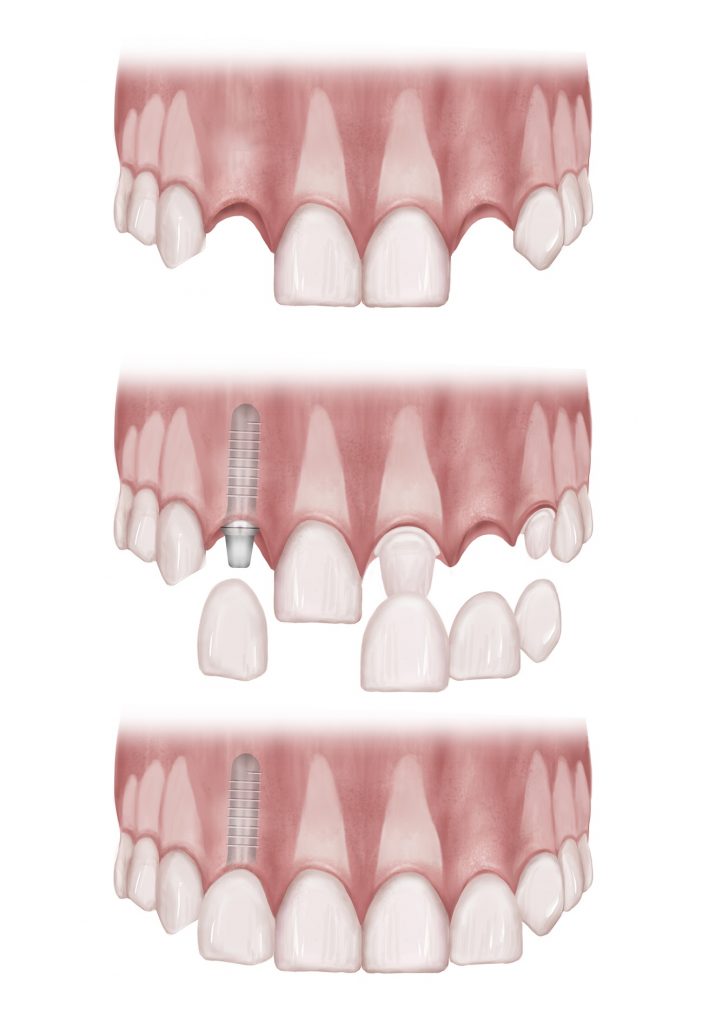Guide to Anterior Implants
The information in the Guide to Anterior Implants provides a comprehensive explanation of the consequences of missing teeth, a comparison of dental implants and bridges, and a detailed description of anterior implant procedures. We encourage you to review all of the pages to help you make an informed decision about your treatment options.
Preferred Method of Tooth Replacement
Dental implant treatment is the preferred method of tooth replacement in most situations, especially for anterior teeth. This is due to the significant benefits provided by dental implants. Some of the benefits of anterior dental implant treatment include:
- A dental implant preserves the bone by replacing the missing tooth root.
- A dental implant protects the adjacent natural teeth, as opposed to compromising them.
- Superior long-term esthetics are achieved by preventing a visible defect in the bone.
- An implant crown is more hygienic than a bridge because it is cleaned like a natural tooth.
The photos below, courtesy of Dr. Aldo Leopardi, illustrate natural-looking replacement of anterior teeth with dental implant crowns.

Patient had a failed root canal and the tooth had to be surgically removed

An implant-supported crown replaced the failed tooth

Patient had a failed root canal and fractured tooth

An implant-supported crown replaced the fractured tooth
Advantages of Dental Implant vs. Bridge

Advantages of Dental Implants
- Dental implant treatment is the only solution that preserves bone.
- Superior long-term esthetics by preventing a visible defect in the bone as a result of tooth loss.
- No compromise to the health of adjacent teeth.
- Dental implant restorations have a much better long-term prognosis
- The American Dental Association quotes a 10 year life span for bridges
- Documented clinical studies indicate success rates for implants of 95-98% for 20-50 years
Disadvantages of Bridges
- Long-term health of adjacent teeth is compromised by removing the enamel and placing additional forces on these teeth.
- Difficult to clean and the teeth are susceptible to decay, root canals and gum problems
- Bridges typically need to be replaced every ten years (average). Each time the bridge is replaced more tooth structure is removed.
- When bridges fail, additional teeth are often affected and more extensive treatment is usually necessary
Disadvantages of Dental Implants
- More planning time and treatment time required
- Treatment requires surgical procedure
Advantages of Bridges
- Less planning and treatment time involved
- No surgical procedure is required